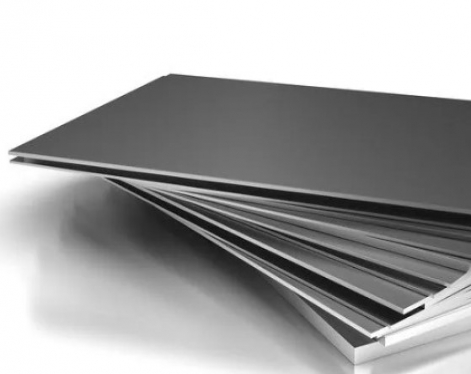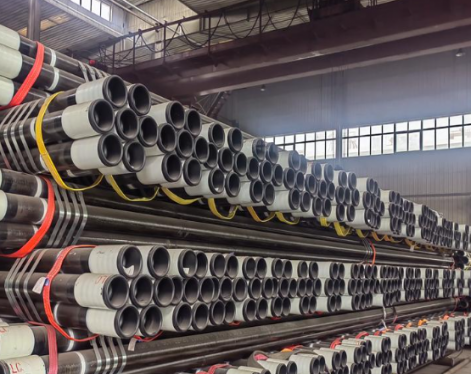304 and 316 stainless steel plates are extremely common in daily life and industrial production. Their appearance is strikingly similar, with both possessing a metallic luster and a smooth surface, making them difficult to distinguish. However, don't be fooled by their similar appearance. Let's delve deeper into the differences between these two types of stainless steel plates so you can make the right choice for different applications.
Ingredients Revealed
The key factor determining the performance differences between 304 and 316 stainless steel is composition. 304 stainless steel contains 18% chromium and 8% nickel, a ratio that provides basic rust and corrosion resistance.
316 stainless steel, on the other hand, is based on 304 stainless steel with 2% molybdenum added, and contains approximately 16% chromium and 10% nickel. Don't underestimate this 2% molybdenum; it significantly improves 316 stainless steel's corrosion resistance, particularly against chloride ion corrosion.
Performance Comparison
1. Corrosion resistance
There are significant differences in corrosion resistance between 304 and 316 stainless steel. In normal atmospheric and freshwater environments, 304 stainless steel, thanks to its dense oxide film formed by the chromium and nickel elements, effectively blocks oxygen and moisture from contacting the metal, providing excellent corrosion resistance sufficient for daily use. However, its corrosion resistance declines slightly in environments with high chloride ion concentrations.
The addition of molybdenum to 316 stainless steel significantly enhances the strength of its passivation film, significantly improving its tolerance to chloride ions and demonstrating excellent resistance to chloride ion corrosion and pitting. In highly corrosive environments like marine environments and chemical production, 316 stainless steel remains stable over time and is not susceptible to corrosion damage.
316 stainless steel plate goes one step further, offering a high-temperature resistance limit of 1200-1300°C, maintaining excellent strength and corrosion resistance even at these temperatures. Its outstanding heat resistance makes 316 stainless steel plate an indispensable material in the manufacture of high-temperature industrial furnaces and aerospace components.

3. Strength and processability
In terms of strength, 316 stainless steel plate has slightly higher strength and hardness than 304 stainless steel plate due to the addition of molybdenum. It is less likely to deform and damage when subjected to greater pressure and external force, and is suitable for manufacturing parts with higher strength requirements.
However, in terms of processing performance, 304 stainless steel plate has a greater advantage. It is easy to process and can be easily cold-worked and hot-worked, making it easy to form products of various shapes and sizes. During processing, tool wear and cutting heat are also reduced, which can reduce processing costs and improve production efficiency. However, 316 stainless steel plate, due to the increased hardness of molybdenum, is slightly more difficult to cold-work, requiring higher cutting forces and more sophisticated processing techniques.
Prices vary
There's also a significant price difference between 304 and 316 stainless steel. 316 stainless steel contains higher levels of molybdenum and nickel, both relatively expensive metals, significantly increasing its production costs. This results in 316 stainless steel generally being 2-3 times more expensive than 304. Therefore, when choosing, if the performance requirements are not high, from a cost perspective, 304 stainless steel plate is a more economical choice.
Different application areas
304 stainless steel plate application areas
1. Food processing equipment: Stainless steel storage tanks, mixing drums, and conveying pipes, designed for direct contact with food and corrosion resistance.
2. Home decoration: Suitable for kitchen sinks, cabinet panels, security doors and windows, and other applications, ensuring both aesthetic appeal and resistance to everyday corrosion.
3. General chemical equipment: Suitable for reaction tanks and pipelines operating in weakly acidic and alkaline environments, meeting basic corrosion protection requirements.
316 stainless steel plate application areas
1. Marine engineering: Ship decks, desalination equipment, and offshore platform structures offer exceptional resistance to seawater chloride ion corrosion.
2. High-end medical equipment: Surgical instruments, infusion set components, etc., offer excellent resistance to body fluid corrosion and biocompatibility.
3. High-temperature industrial scenarios: such as boiler superheaters and heat treatment equipment accessories, which can operate for a long time in environments above 1200°C.
Read more: The Difference between Stainless Steel Plates and Galvanized Steel Plates
Ingredients Revealed
The key factor determining the performance differences between 304 and 316 stainless steel is composition. 304 stainless steel contains 18% chromium and 8% nickel, a ratio that provides basic rust and corrosion resistance.
316 stainless steel, on the other hand, is based on 304 stainless steel with 2% molybdenum added, and contains approximately 16% chromium and 10% nickel. Don't underestimate this 2% molybdenum; it significantly improves 316 stainless steel's corrosion resistance, particularly against chloride ion corrosion.
Performance Comparison
1. Corrosion resistance
There are significant differences in corrosion resistance between 304 and 316 stainless steel. In normal atmospheric and freshwater environments, 304 stainless steel, thanks to its dense oxide film formed by the chromium and nickel elements, effectively blocks oxygen and moisture from contacting the metal, providing excellent corrosion resistance sufficient for daily use. However, its corrosion resistance declines slightly in environments with high chloride ion concentrations.
The addition of molybdenum to 316 stainless steel significantly enhances the strength of its passivation film, significantly improving its tolerance to chloride ions and demonstrating excellent resistance to chloride ion corrosion and pitting. In highly corrosive environments like marine environments and chemical production, 316 stainless steel remains stable over time and is not susceptible to corrosion damage.
2. High temperature resistance
304 stainless steel has a high-temperature resistance, capable of withstanding temperatures up to 800°C. It maintains basic structural stability and mechanical properties in typical high-temperature environments. 304 stainless steel functions well in everyday kitchen utensils and common industrial heating equipment.316 stainless steel plate goes one step further, offering a high-temperature resistance limit of 1200-1300°C, maintaining excellent strength and corrosion resistance even at these temperatures. Its outstanding heat resistance makes 316 stainless steel plate an indispensable material in the manufacture of high-temperature industrial furnaces and aerospace components.

3. Strength and processability
In terms of strength, 316 stainless steel plate has slightly higher strength and hardness than 304 stainless steel plate due to the addition of molybdenum. It is less likely to deform and damage when subjected to greater pressure and external force, and is suitable for manufacturing parts with higher strength requirements.
However, in terms of processing performance, 304 stainless steel plate has a greater advantage. It is easy to process and can be easily cold-worked and hot-worked, making it easy to form products of various shapes and sizes. During processing, tool wear and cutting heat are also reduced, which can reduce processing costs and improve production efficiency. However, 316 stainless steel plate, due to the increased hardness of molybdenum, is slightly more difficult to cold-work, requiring higher cutting forces and more sophisticated processing techniques.
Prices vary
There's also a significant price difference between 304 and 316 stainless steel. 316 stainless steel contains higher levels of molybdenum and nickel, both relatively expensive metals, significantly increasing its production costs. This results in 316 stainless steel generally being 2-3 times more expensive than 304. Therefore, when choosing, if the performance requirements are not high, from a cost perspective, 304 stainless steel plate is a more economical choice.
Different application areas
304 stainless steel plate application areas
1. Food processing equipment: Stainless steel storage tanks, mixing drums, and conveying pipes, designed for direct contact with food and corrosion resistance.
2. Home decoration: Suitable for kitchen sinks, cabinet panels, security doors and windows, and other applications, ensuring both aesthetic appeal and resistance to everyday corrosion.
3. General chemical equipment: Suitable for reaction tanks and pipelines operating in weakly acidic and alkaline environments, meeting basic corrosion protection requirements.
316 stainless steel plate application areas
1. Marine engineering: Ship decks, desalination equipment, and offshore platform structures offer exceptional resistance to seawater chloride ion corrosion.
2. High-end medical equipment: Surgical instruments, infusion set components, etc., offer excellent resistance to body fluid corrosion and biocompatibility.
3. High-temperature industrial scenarios: such as boiler superheaters and heat treatment equipment accessories, which can operate for a long time in environments above 1200°C.
Read more: The Difference between Stainless Steel Plates and Galvanized Steel Plates









